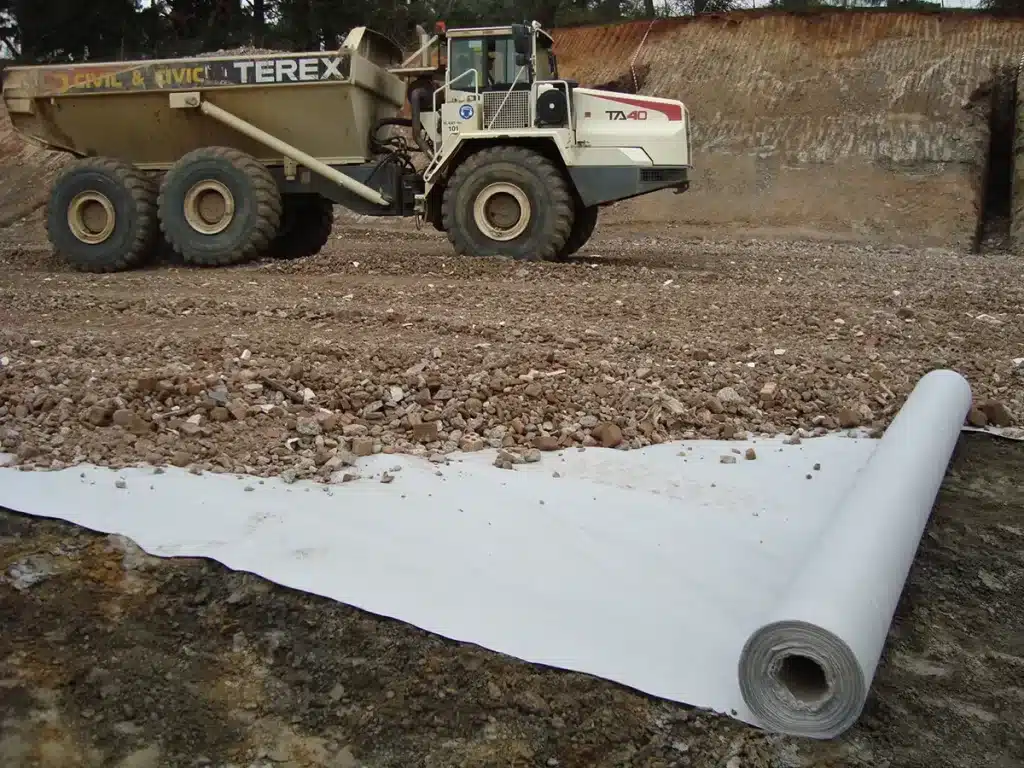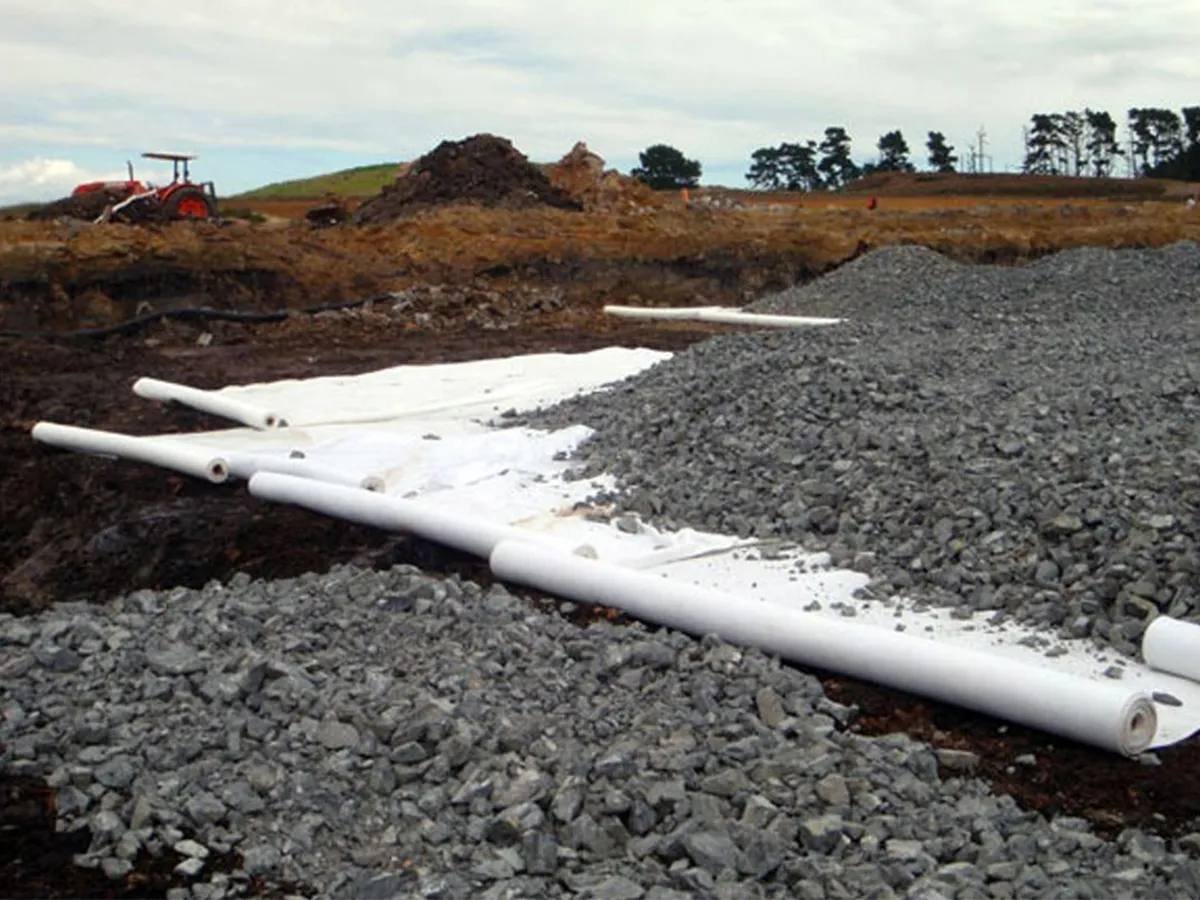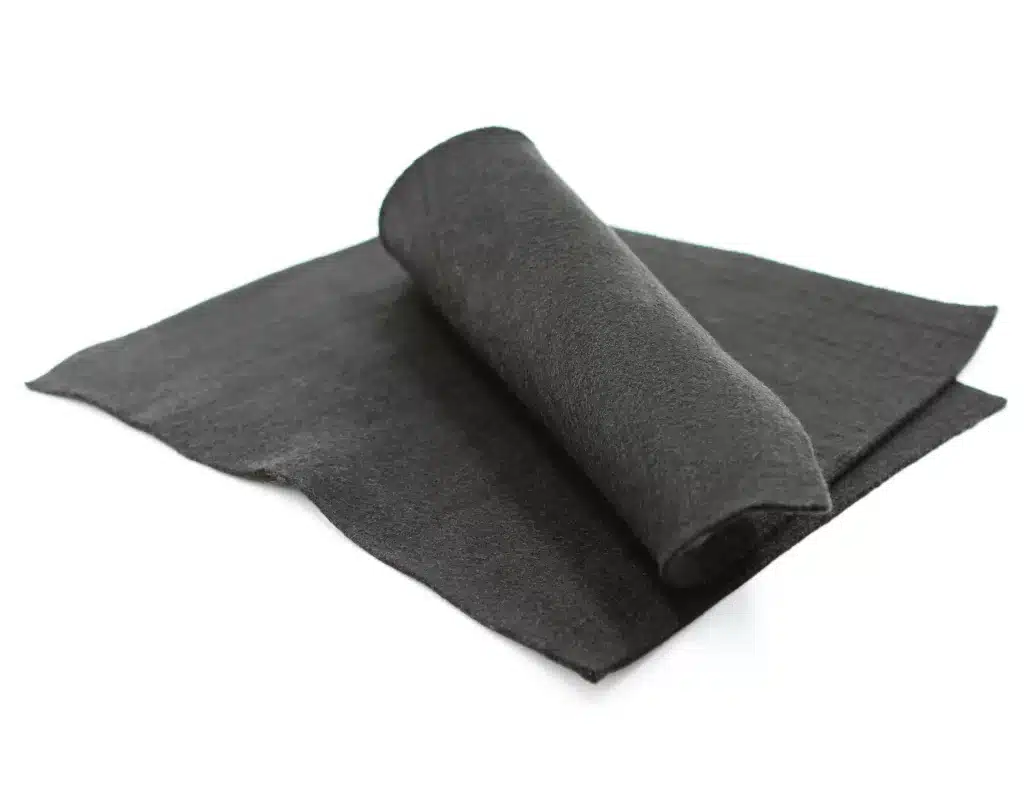+86-159 9860 6917
info@geofantex.com
geofantex@gmail.com
+86-400-8266163-44899
Soil stabilization is crucial for roadways, railways, and load-bearing construction. Poor drainage and unsuitable materials can cause structural damage, leading to project failure. Rising aggregate costs have pushed contractors and engineers to seek alternatives that provide structural integrity without increasing costs.
Geotextiles have become the preferred choice in these situations, allowing roads and other projects to be designed and constructed as before, but with significantly less aggregate required for the final results. Geotextiles separate two layers of material, effectively stabilizing the structure.

Applications of Geotextile Fabric
- Temporary Roadways: Ideal for geotextile applications, including haul roads used for limited purposes.
- Long-term Projects: Ensuring soil integrity over long projects, such as road building, where aggregate is placed over a breathable, porous layer that allows drainage but prevents the rock from mixing with the soil. This extends the road’s lifespan and prevents early cracking.
- Load-bearing Support: Reinforcing soil beneath the geotextile fabric allows it to carry high stretchable loads without collapsing, which is crucial for extending the lifespan of roadways and railways.
- Retaining Walls: Geotextile fabric improves the lifespan of retaining walls by permitting liquids and gases to pass through, reducing potential impacts on the wall.
Constructing Driveways with Woven Geotextile Fabric
Driveway Fabric: Provides a support base that stabilizes surfaces, preventing potholes and ruts. Woven fabric is highly durable, allowing water to pass through without damaging the driveway while offering excellent stabilization. Non-woven fabric, serving as a filter, does not provide stabilization and stretches, making it unsuitable for driveways.
Steps to Construct a Driveway
- Preparation: Remove debris and protruding objects like stumps or rocks that might tear the fabric. Level the surface to avoid water collection. If the area retains water, install a drain or pipe.
- Laying the Fabric: Place the fabric directly on the prepared surface, rolling it out flat and avoiding folds and creases. Overlap the fabric by 1 to 3 inches if needed and secure it with pins or staples.
- Adding Gravel: Place and compact the gravel to a depth of 6-8 inches. Trucks and loaders can drive over the fabric, but avoid sudden stops, turns, and starts. Push the aggregate into the fabric, creating a protective layer, and slightly mound it for drainage on the driveway’s sides.

Choosing the Right Aggregate
- Under Asphalt: Use crushed, angular aggregate with a diameter of one inch and 1% dust. Limestone is a suitable option, but other aggregates can also work.
- Dense Grade Aggregate (DGA): Designed for stones no larger than one inch in size. Avoid rounded aggregate as it lacks the necessary interlocking due to its shape.
Tips for Constructing a Gravel Driveway
- Avoid Soft Ground: Soil with grass, roots, leaves, weeds, and debris creates a soft surface unsuitable for spreading gravel. Remove all topsoil and strip the soil down to hard rock for a stable bed.
- Ensure Proper Drainage: Poor drainage leads to water erosion and surface destruction. Use geotextile fabric between the subsoil and the bottom gravel layer to prevent silt from loosening the gravel and weakening the surface.
- Prevent Gravel Movement: Consider using a gravel paver product to keep the gravel in place, providing a stable surface and reducing rutting. Alternatively, construct sides using wood, brick, or concrete blocks to contain the gravel.
- Choose the Right Gravel: Use angular gravel pieces at least 1 inch in diameter for proper interlocking. The final top layer should be no larger than a golf ball. The total driveway thickness, with layers of different-sized gravel, should be about 12 inches.
- Compact Each Layer: Each gravel layer should be around 4 inches thick and must be compacted properly. Use smaller gravel pieces in successive layers, compacting each with a hand-operated machine or roller.
By following these steps and advice, you can construct a long-lasting, stable driveway. Proper construction takes time and effort, but cutting corners will result in an unstable mess requiring rework.



Get Free Sample
We’ll respond as soon as possible(within 12 hours)






















